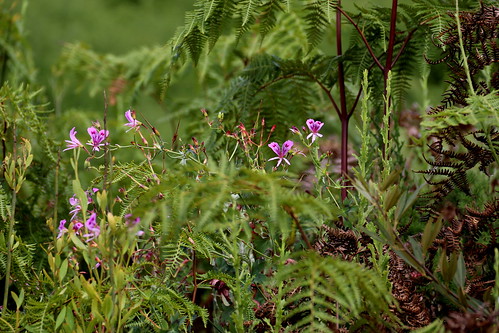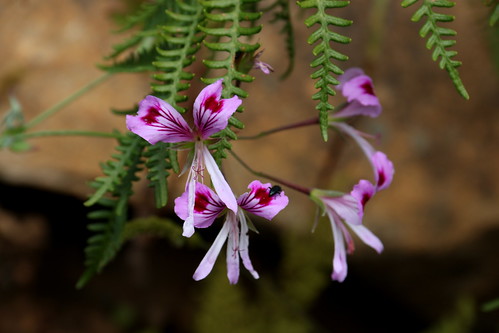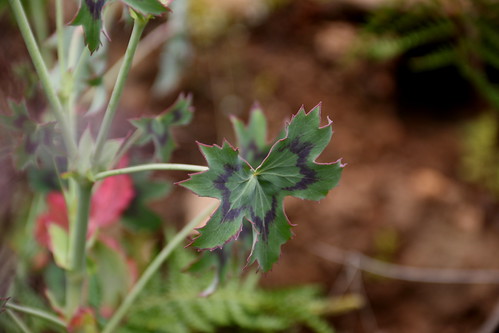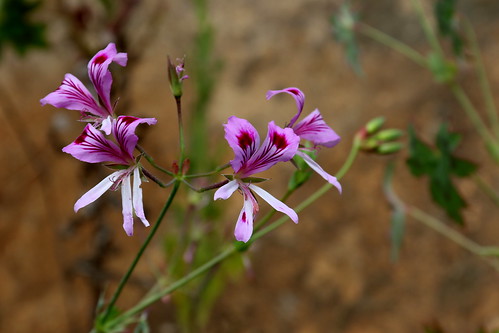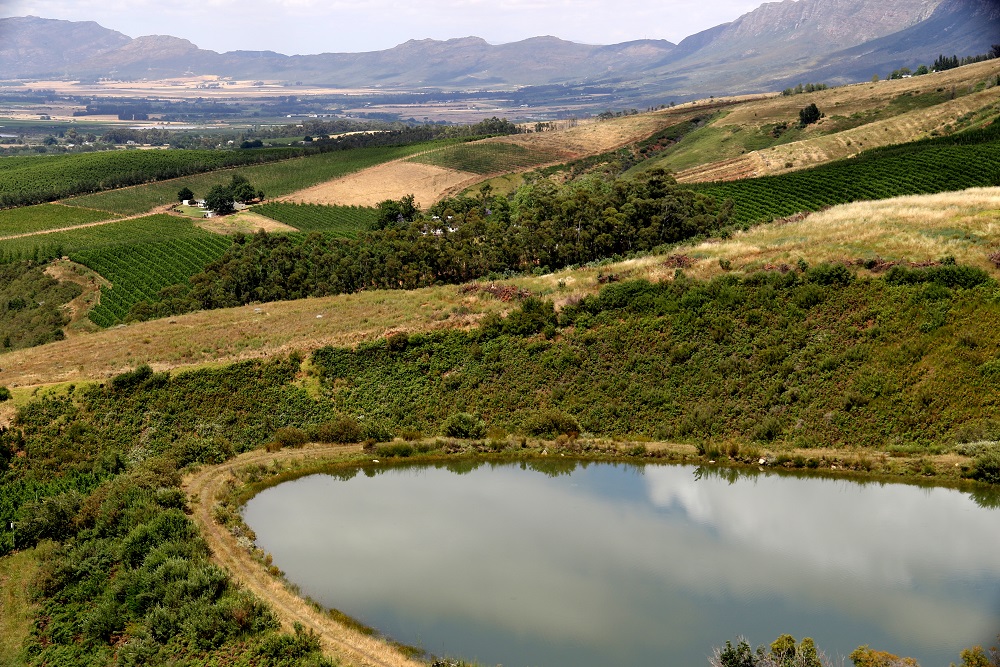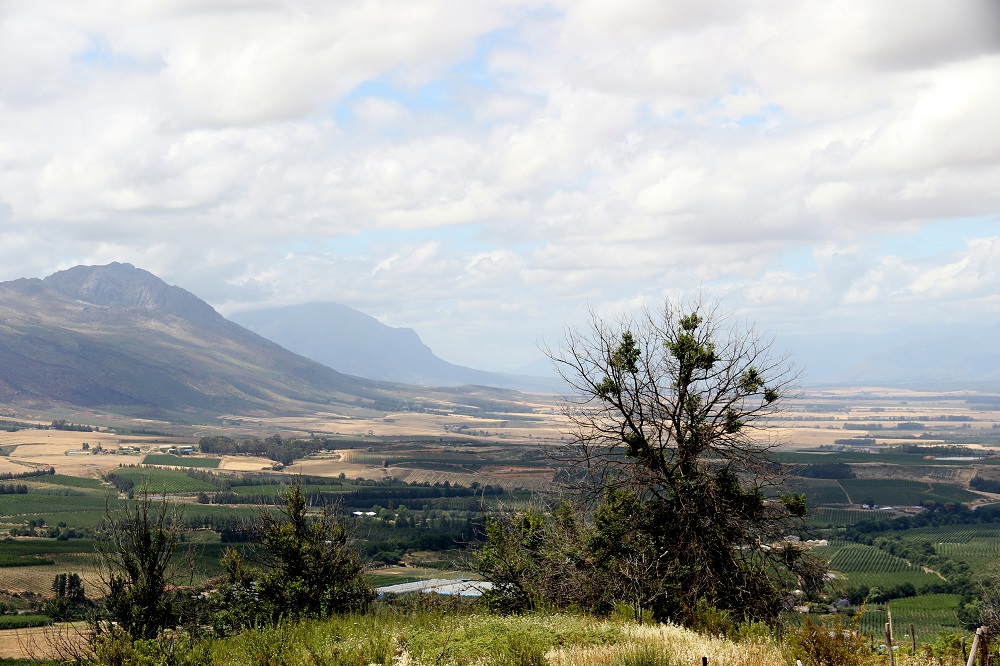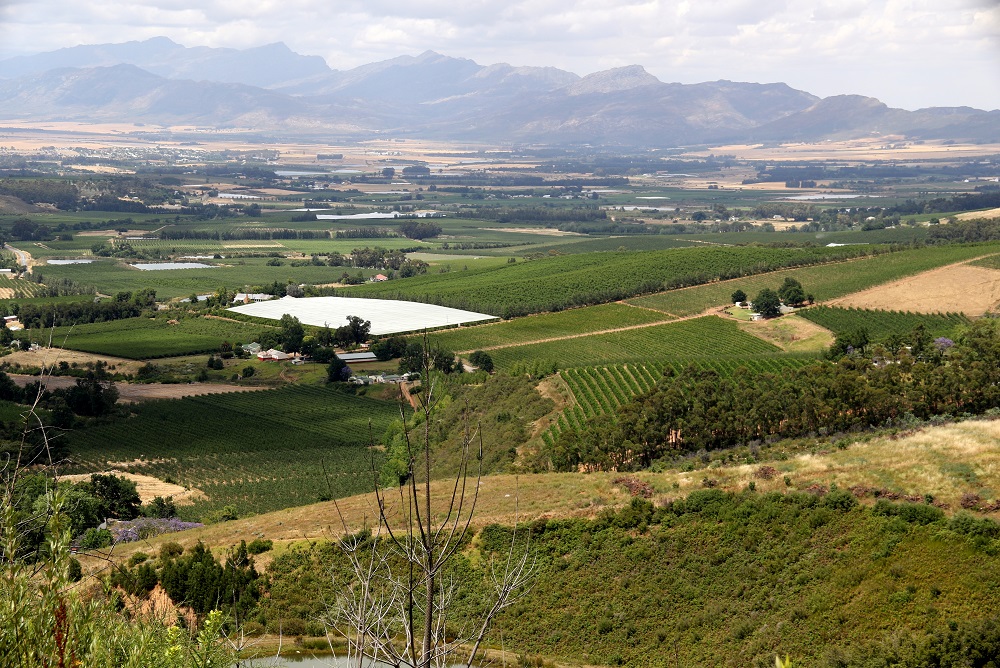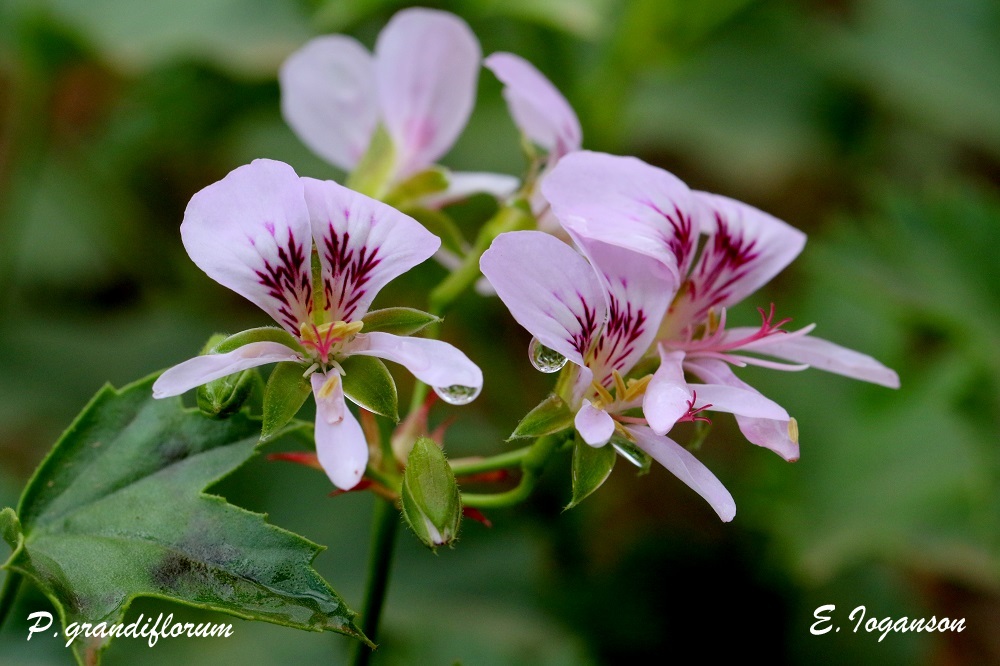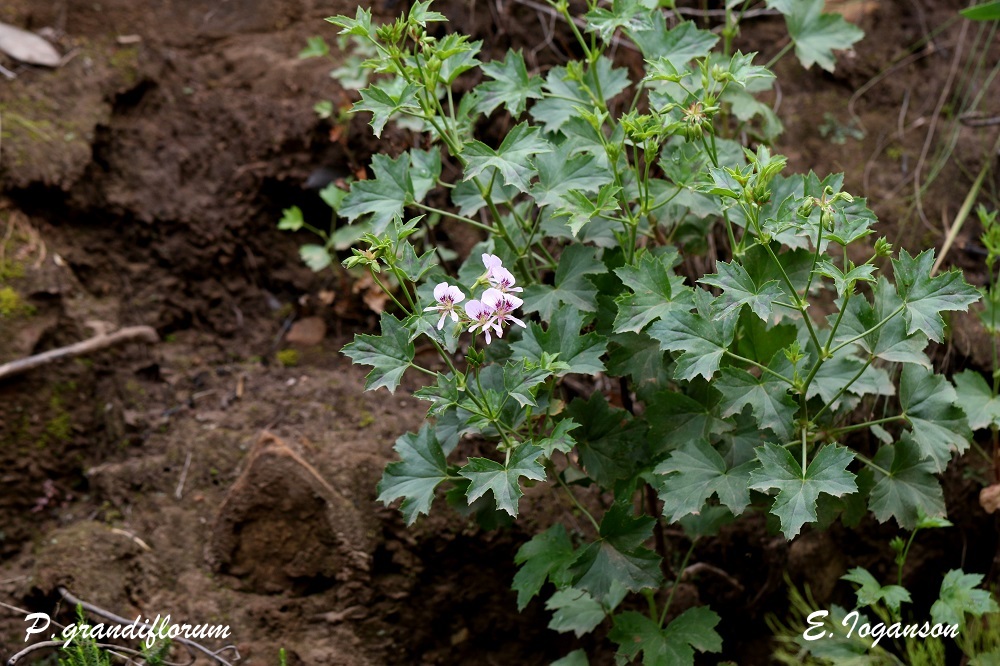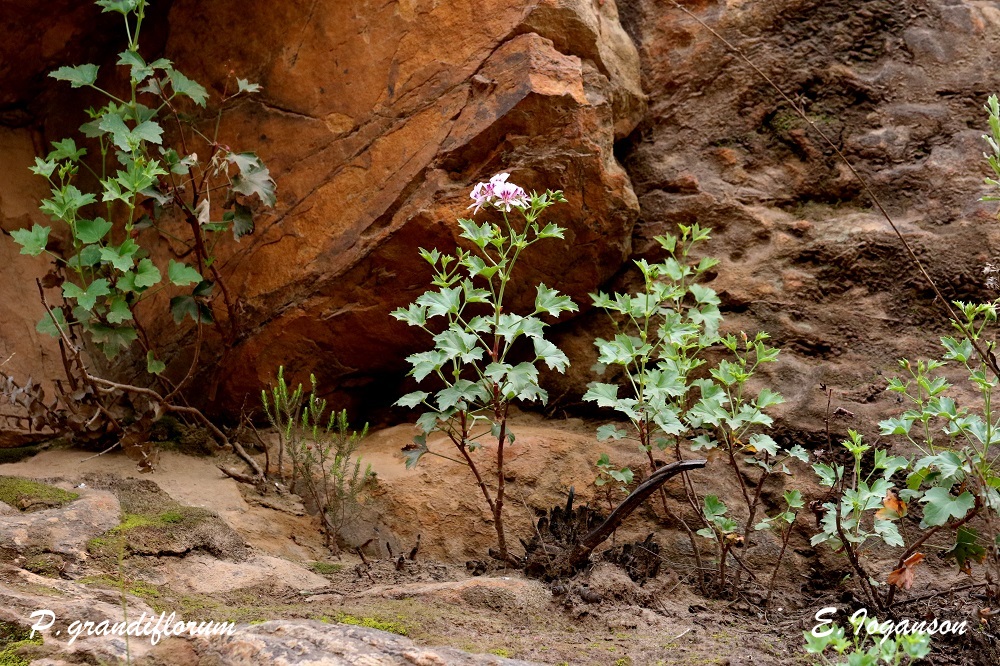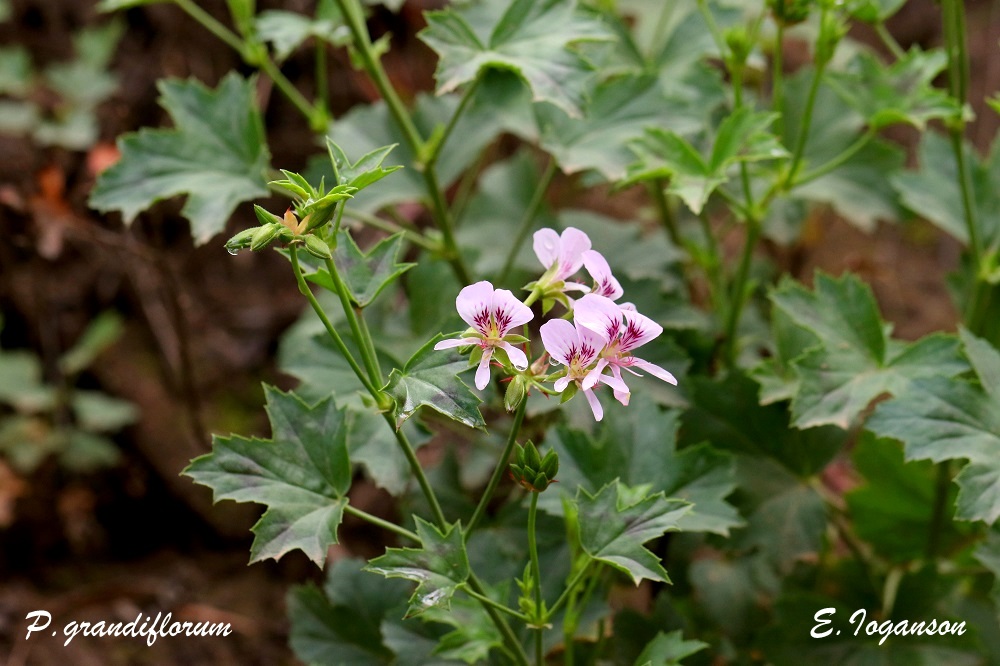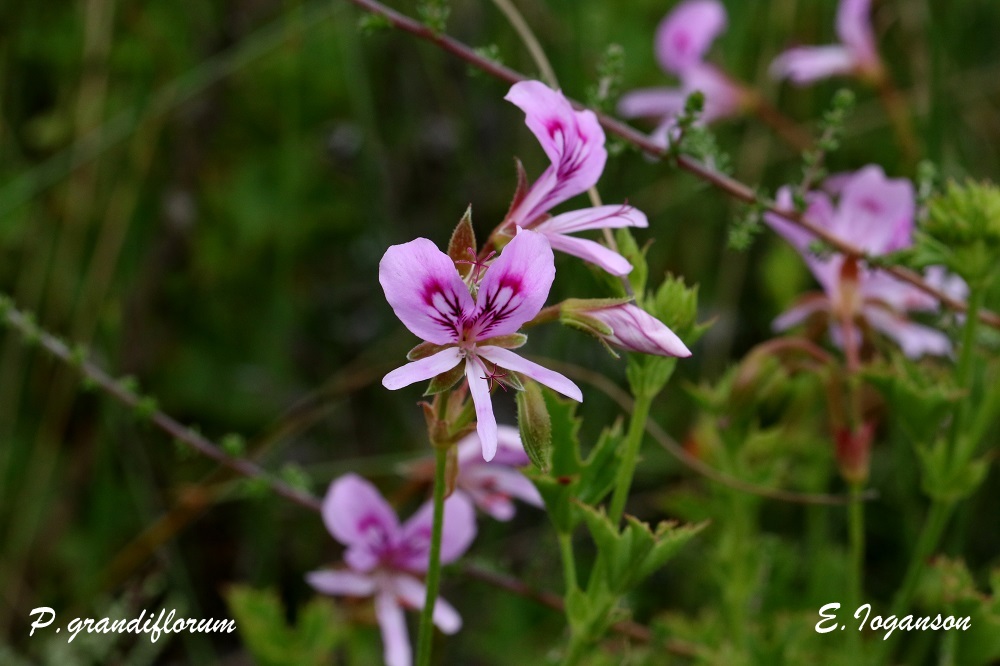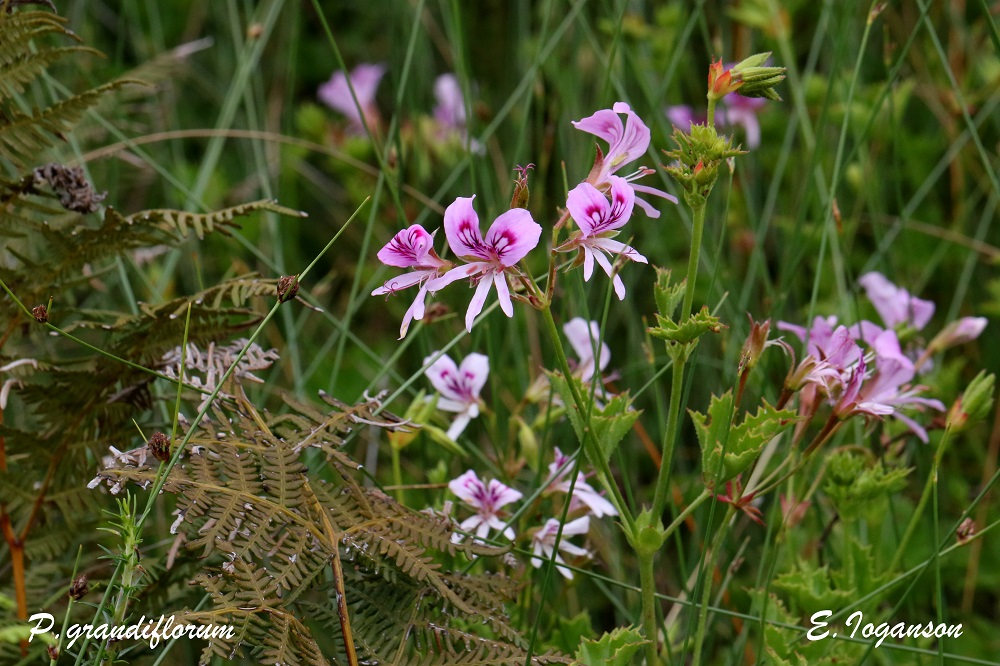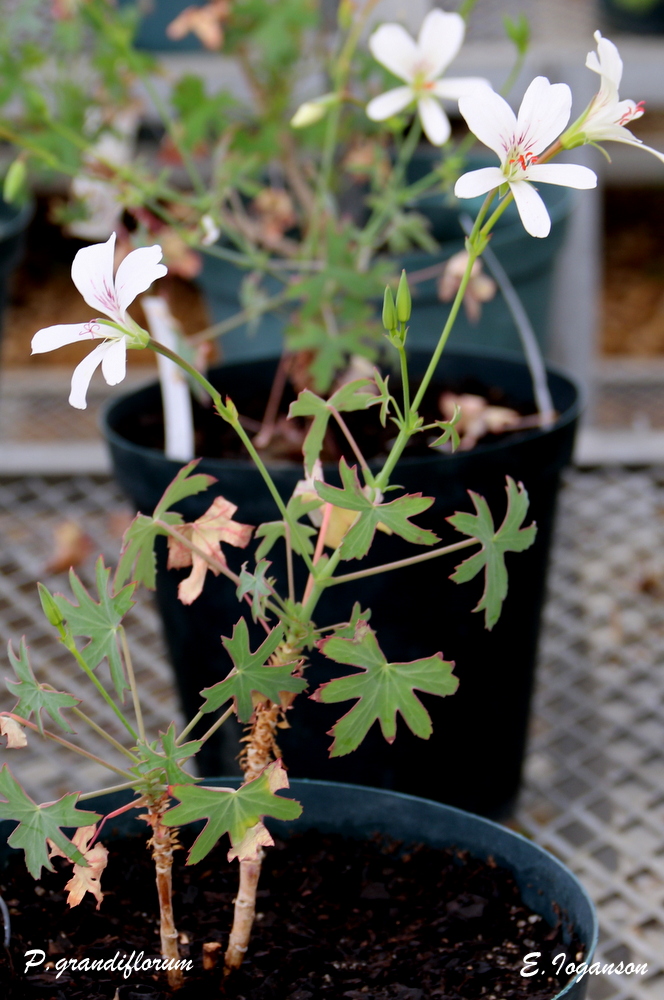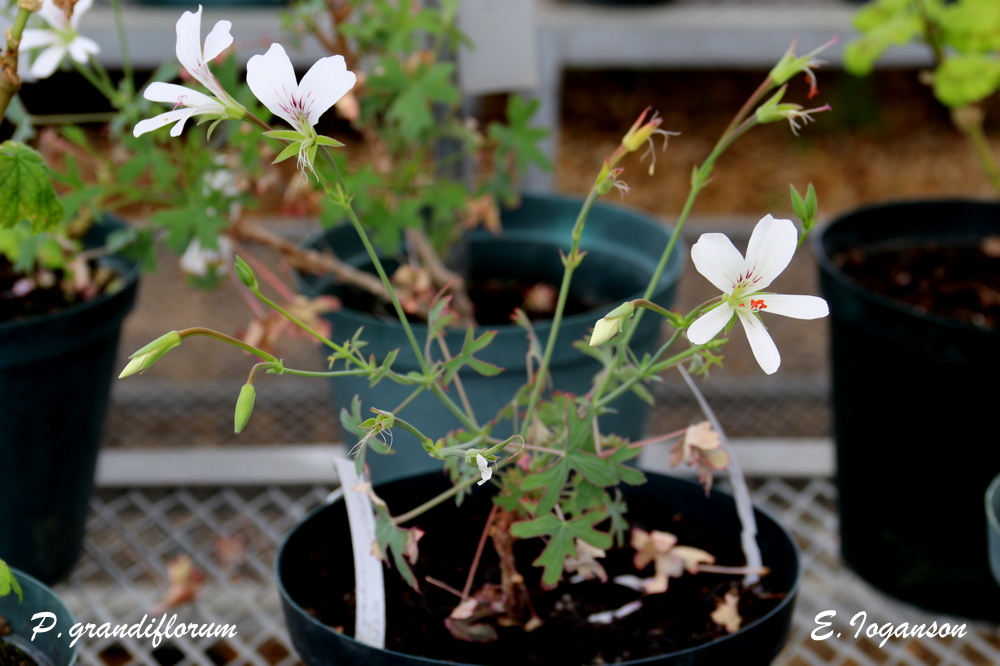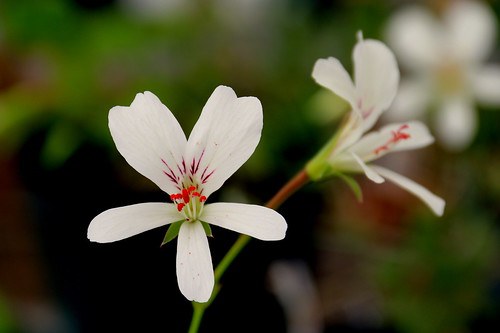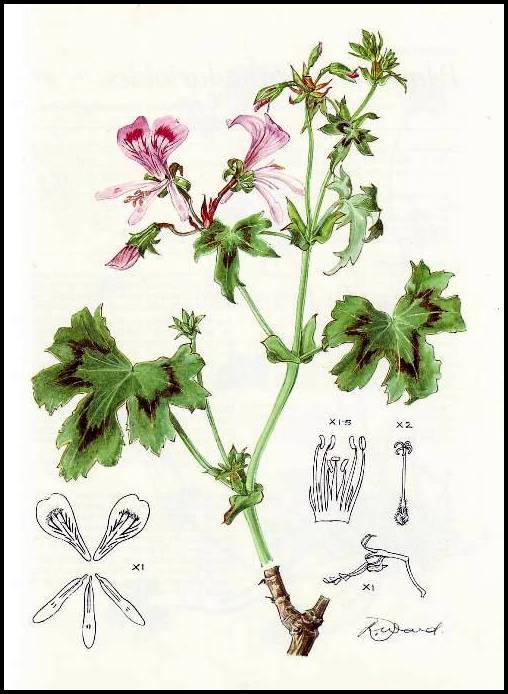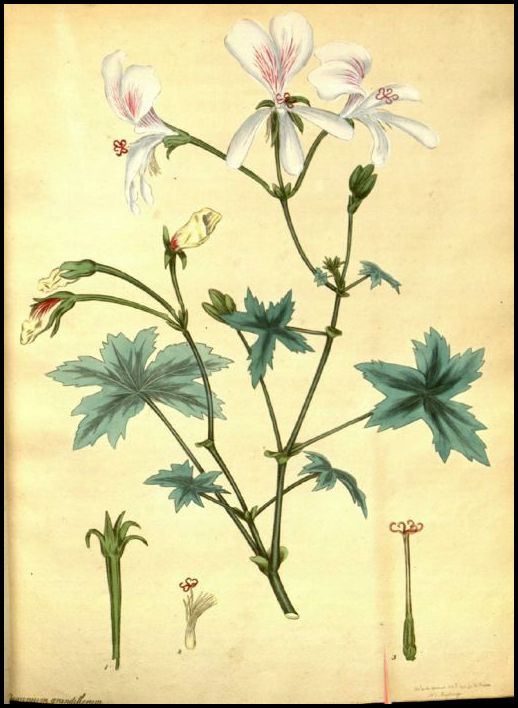P. grandiflorum
РусскийPelargonium grandiflorum (Andrews) Willdenow (1800), Sp. Pl., ed. 4 3(1): 674 (1800)
genus: Pelargonium L’Heritier
subgenus: Pelargonium L’Heritier *
section: Pelargonium De Candolle
syn.: Geranium grandiflorum, Bot. Rep. 1: t. 12 (1799)
Pelargonium grandiflorum is an erect straggling herbaceous shrub, usually growing to a height of 0.75 m. The glaucous stem is soft smooth and shiny.
This is a specioes with attractive, smooth and glaucous foliage. The leaves are deeply 5-7 -palmately-lobed, the lobes being divergent and aacute with coarsely toothed margins. The lover leaves are usually larger (up to 5 cm long and 8 cm broad) and longer petioled than upper ones. All the leaves have a cordate base but only some leaves are zoned. The large and ovate stipules with ciliate margins are fairly conspicuous.
The peduncles are usually 2-3 -flofered but up to 5-flowered inflorescenes are also found. The color of the relatively large and beautiful flowers varies from creamish-white to pink to purrplish with darker streaks, and sometimes also, blotchers present on the upper two petals. The white-flowered forms of this species have longer hypanthas ( >15 mm) and dark veins as nectar guides while in the pink flowered forms the length of the hypanthium does not exceed 15 mm, and the back petals have dark spots as nectar guides. The pollen of the seven fertile stamens is orange.
It flowers from October to March.
Diistribution and environment
Pelargonium grandiflorum is restricted to the south western and western Cape areas where it occurs from Nieuwoudtville to Tulbagh. It grows in mountainous habitats, usually on rocky sandstone slopes at an altitude of around 300 metres.
P. grandiflorum in the northern, drier parts of the areal - Loeriesfontein, Nieuwoudtville, the vicinity Vanrhynsdorp, Gifberg often have white-cream flowers, the plants of the southern regions are dominated by pink color.
Kew Garden's first plant hunter Francis Masson, a Scottish botanist and gardener, introduced the species into England in 1794.
A form of P. grandiflorum with pink flowers in habitat. Tulbagh, Western Cape, RSA. Photo by E. Ioganson

View of the valley from the place mountain habitat P. grandiflorum. Surroundings of Tulbagh, Western Cape, South Africa. Photo by E. Ioganson


Plants of P. grandiflorum in wild. In the last two photos - the flowers with the another markings on the upper petals (different nectar guides), than ones on first four photos. These both plants grow in the same place - in the mountains of the Middelberg Pass, Citrusdal, Western Cape, South Africa.


White flowered form of P. grandiflorum. Collection of species Pelargonium in Kirstenbosch, Cape Town, South Africa. Photo by E. Ioganson


Botanical illustrations of Pelargonium grandiflorum
Ill. Ellaphie Ward-Hilhorst (1920-1994)
H.C. Andrews,The botanist’s repository, vol. 1: t. 12 (1797-1798), Geranium grandiflorum


References
- *Röschenbleck J., Albers F., Müller K., Weinl S., Kudla J. (2014) Phylogenetics, character evolution and a subgeneric revision of the genus Pelargonium (Geraniaceae). Phytotaxa 159 (2): 31–76.
- Van der Walt, JJ.A. 1977. Pelargoniums of southern Africa, Vol.1, Purnell, Cape Town.
- Goldblatt, P. & Manning, J. 1997. Nieuwoudtville Bokkeveld Plateau & Hantam. South African Wild Flower Guide 9. Botanical Society of South Africa. Claremont.

























